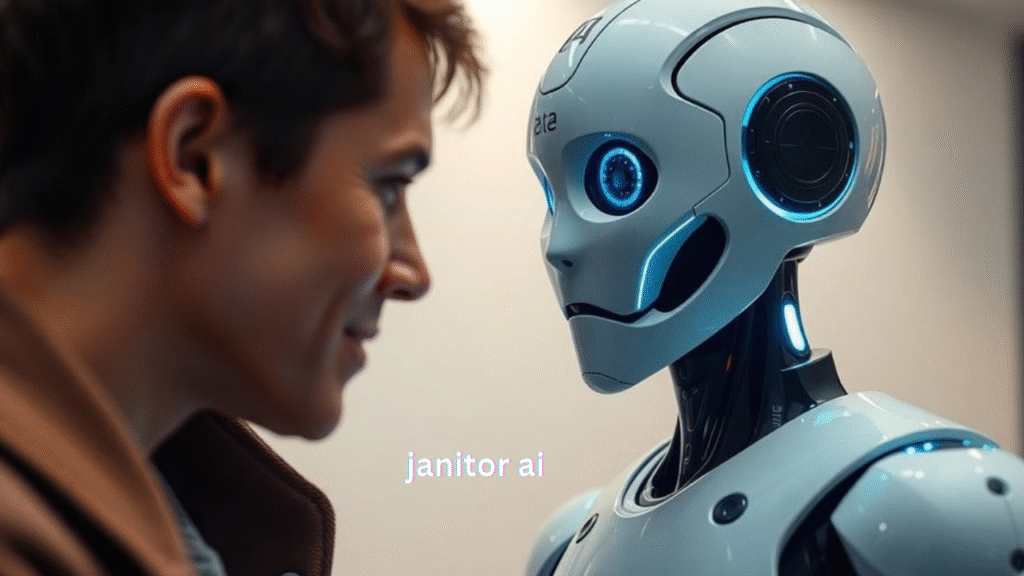In an era where technology transforms every aspect of our lives, the cleaning industry is no exception. Artificial intelligence (AI), once confined to data analysis and automation in tech-heavy sectors, is now revolutionizing janitorial services. The emergence of Janitor AI—a term encompassing AI-powered cleaning robots and intelligent cleaning management systems—marks a pivotal moment in facility management. Businesses, institutions, and public spaces are embracing smart cleaning solutions that promise efficiency, consistency, and cost savings.
At its core, Janitor AI refers to technologies that automate and enhance cleaning operations using AI algorithms, robotics, sensors, and data analytics. These systems can navigate spaces autonomously, detect dirt or spills, and adapt cleaning routes based on real-time conditions. This innovation aligns with growing global demands for hygiene, sustainability, and operational efficiency, especially in high-traffic environments like hospitals, airports, and shopping malls. By integrating AI into janitorial work, facilities aim to elevate cleanliness standards while optimizing resources.
The shift towards Janitor AI is not solely driven by convenience—it responds to broader challenges in the cleaning industry. Labor shortages, rising operational costs, and heightened awareness of health risks have placed pressure on traditional janitorial models. Facility managers are turning to technology to fill these gaps, ensuring consistent, high-quality cleaning without overextending human workers. As AI becomes more accessible, its role in janitorial services will continue to expand, reshaping how cleanliness is maintained across sectors.
Understanding Janitor AI Technologies and Mechanisms Behind the Innovation
Behind the sleek exterior of a cleaning robot lies a complex fusion of technologies. Janitor AI systems leverage robotics, machine learning, computer vision, and IoT sensors to achieve autonomous or semi-autonomous cleaning functions. Robotics provides the physical mobility and dexterity needed to navigate spaces, avoid obstacles, and operate cleaning tools. Machine learning enables continuous improvement, allowing the system to refine its cleaning patterns based on experience and data collection.
Computer vision plays a critical role in enabling Janitor AI to “see” its environment. Using cameras and image recognition software, these systems detect spills, dirt, or clutter in real time. This visual input, combined with lidar sensors or ultrasonic detectors, helps the AI map its surroundings, plot efficient cleaning routes, and identify areas requiring extra attention. Some advanced models can even differentiate between liquid spills and solid debris, adjusting their cleaning mode accordingly.
Janitor AI solutions range from fully autonomous floor-scrubbing robots to hybrid models that work alongside human staff. Autonomous robots are programmed to handle routine floor cleaning tasks, returning to docking stations for charging or refilling when needed. Meanwhile, semi-autonomous systems might require human oversight for specific operations like staircases or tight corners. Brands like Whiz by SoftBank Robotics, BrainOS-powered scrubbers, and Nilfisk Liberty SC50 represent the cutting edge of this field, offering scalable solutions for diverse facility types.
These technologies work together to create a responsive, adaptable cleaning system capable of operating in dynamic environments. Unlike pre-programmed robotic vacuums, Janitor AI doesn’t rely solely on static maps—it learns from its surroundings and user inputs, continually improving its performance. As these systems evolve, we can expect even greater levels of automation, predictive maintenance, and integration with broader building management systems.
Benefits of Implementing Janitor AI in Commercial and Industrial Spaces

The benefits of adopting Janitor AI in commercial and industrial spaces are manifold, starting with improved efficiency and productivity. AI-powered cleaning robots can operate continuously without fatigue, covering large floor areas in less time compared to manual cleaning crews. By automating repetitive tasks, businesses free up human staff for higher-value activities, such as detailed sanitization or customer service roles. This shift not only optimizes labor but also reduces the risk of human error or oversight in critical cleaning operations.
Another compelling advantage is the potential for cost savings over the long term. While the upfront investment in Janitor AI technology may be significant, the reduction in labor costs, cleaning material usage, and operational downtime often leads to a favorable return on investment. Intelligent cleaning systems monitor consumable levels, track cleaning frequencies, and generate data reports, allowing facility managers to make informed decisions about resource allocation. Predictive maintenance features further minimize costly equipment breakdowns and extend the lifespan of cleaning assets.
Janitor AI also contributes to higher hygiene and sanitation standards, an increasingly crucial factor in a post-pandemic world. AI-enabled systems ensure consistent cleaning coverage by following optimized routes and monitoring cleaning efficacy through sensors. This consistency reduces the likelihood of missed spots or contamination risks, especially in high-touch areas. In healthcare settings, schools, and public transport hubs, maintaining such hygiene standards can directly impact health outcomes and public trust.
Additionally, Janitor AI enhances workplace safety and staff well-being by handling hazardous or physically demanding cleaning tasks. Robots can safely disinfect contaminated zones, clean chemical spills, or sanitize hard-to-reach spaces without exposing human workers to danger. By reducing repetitive strain injuries and minimizing contact with harmful substances, Janitor AI creates a safer, healthier work environment while maintaining high cleaning performance.
Challenges and Limitations of Janitor AI Adoption
Despite its transformative potential, Janitor AI faces several challenges and limitations that facility managers must consider. One of the most significant barriers is the high upfront cost of purchasing and deploying AI-enabled cleaning systems. Small businesses or organizations with tight budgets may struggle to justify the initial expenditure, even if long-term savings are projected. Beyond hardware costs, expenses related to software updates, maintenance contracts, and staff training can add to the financial burden.
Integrating Janitor AI into existing cleaning protocols presents another hurdle. Cleaning robots are highly effective in open, structured spaces but may struggle in environments filled with clutter, narrow passageways, or frequent layout changes. Facilities must adapt their workflows to accommodate robot navigation, sometimes requiring minor modifications to physical layouts or schedules. Human janitors remain necessary for detailed, nuanced cleaning tasks that AI systems cannot yet replicate, creating a hybrid workforce model that requires careful coordination.
Technical challenges also persist, especially in environments with unpredictable foot traffic or obstacles. While AI systems can recognize static objects, adapting to dynamic human movement or rapidly changing conditions still poses a risk of navigation errors or incomplete cleaning coverage. Additionally, concerns over data privacy, system hacking, and equipment malfunction must be addressed through robust cybersecurity measures and fail-safe protocols.
The adoption of Janitor AI also raises ethical and labor concerns. As automation increases, fears of job displacement among janitorial staff grow. While AI is more likely to augment rather than eliminate human roles, businesses must proactively address workforce transitions, offering retraining opportunities and emphasizing human oversight in cleaning operations. Balancing technological advancement with ethical responsibility remains a critical challenge as Janitor AI adoption expands.
Conclusion
Janitor AI represents a bold step forward in facility management, blending technology, efficiency, and hygiene into a powerful solution for modern cleaning challenges. By leveraging AI-powered robotics, computer vision, and data-driven insights, businesses can achieve higher cleanliness standards while optimizing operational resources. The benefits—from enhanced productivity and cost savings to improved safety and sustainability—position Janitor AI as a valuable investment for a wide range of industries.
However, realizing the full potential of Janitor AI requires addressing its challenges thoughtfully. Facility managers must weigh the costs, navigate integration complexities, and ensure that automation complements rather than replaces human workers. As technology continues to evolve, fostering a collaborative relationship between AI systems and human teams will be key to achieving sustainable, ethical outcomes.
The future of cleaning is undoubtedly smarter, more data-driven, and increasingly automated. By embracing Janitor AI responsibly, organizations can build cleaner, healthier environments that meet the demands of a rapidly changing world—one sweep at a time.
FAQs
What is Janitor AI and how does it work?
Janitor AI refers to AI-powered cleaning systems that use robotics, sensors, and machine learning to automate and enhance cleaning operations in various environments.
How much does it cost to implement Janitor AI in a commercial building?
Costs vary widely based on system complexity and size, typically ranging from $20,000 to over $100,000 for large-scale implementations.
Can Janitor AI replace human janitors completely?
No; while AI can automate routine tasks, human janitors remain essential for detailed, specialized, or nuanced cleaning activities.
What industries benefit the most from Janitor AI?
Healthcare, hospitality, transportation hubs, and large commercial facilities benefit most due to high cleaning demands and hygiene standards.
How does Janitor AI improve cleaning quality and consistency?
By following optimized routes, monitoring cleaning efficacy, and adapting in real time, Janitor AI ensures consistent, high-quality cleaning coverage.
You May Also Read: https://techbusinessus.com/flatline-hot-sauce/



